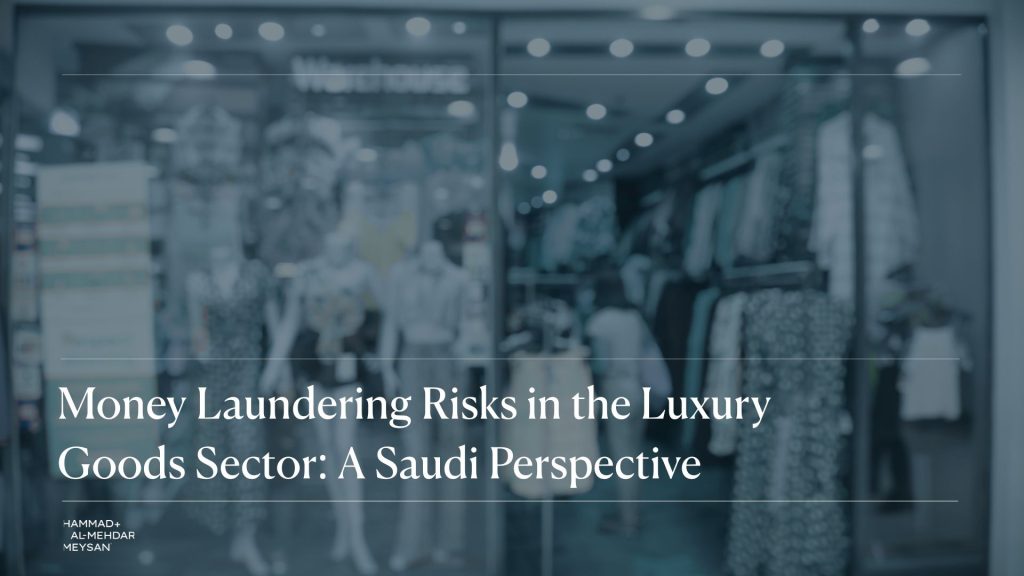
Luxury goods such as high-value watches, designer apparel, jewellery, and collectable art are increasingly recognised as tools for concealing illicit funds. In Saudi Arabia, the regulatory focus on this sector has grown in parallel with the Kingdom’s broader financial crime enforcement agenda.
A Sector at Risk
The appeal of luxury goods in laundering schemes lies in their portability, high value-to-volume ratio, and ease of resale, often across borders and outside formal financial channels. Transactions involving these items can be difficult to trace, particularly where intermediaries, informal dealers, or cash payments are used.
Legal Framework
The Anti-Money Laundering Law (Royal Decree No. M/M/20, 1439H) captures any act intended to disguise the origin of criminal proceeds. Transactions involving luxury assets fall within the scope when used to convert, transfer, or conceal illicit funds. Penalties under the Law include imprisonment of up to ten years, fines of up to SAR 5 million, and confiscation of related assets.
Who Is Affected
Under Saudi regulation, dealers in high-value goods are classified as Designated Non-Financial Businesses and Professions (DNFBPs). This includes art galleries, jewellery businesses, watch dealers, auction houses, and luxury vehicle resellers. These entities are required to comply with AML obligations, including:
- Conducting full customer due diligence
- Verifying the source of funds
- Reporting suspicious transactions to the Saudi Financial Investigation Unit (SAFIU)
- Maintaining appropriate records
Common Red Flags
SAFIU guidance identifies several indicators that may signal laundering risks, such as:
- Cash purchases exceeding SAR 60,000
- Reluctance to provide personal identification
- Unusual resale patterns involving luxury items
- Transactions structured to avoid reporting thresholds
Enforcement Outlook
While published court decisions remain limited, enforcement activity has increased. In one example, authorities prosecuted a laundering network using shell companies and luxury goods to channel over SAR 500 million in criminal proceeds. The case resulted in custodial sentences and the permanent confiscation of assets.
Compliance Challenges
Unlike financial institutions, many DNFBPs have historically operated without formal compliance functions. Where internal controls and training are weak, identifying and responding to money laundering risks becomes more difficult. Dealers are advised to implement tailored AML programmes supported by legal and compliance expertise.
As Saudi Arabia continues to align its regulatory approach with FATF standards, DNFBPs—particularly those in the luxury sector—will face growing expectations around transparency, reporting, and proactive risk management. Failure to comply not only carries legal consequences but may also damage business credibility in an increasingly regulated market.
